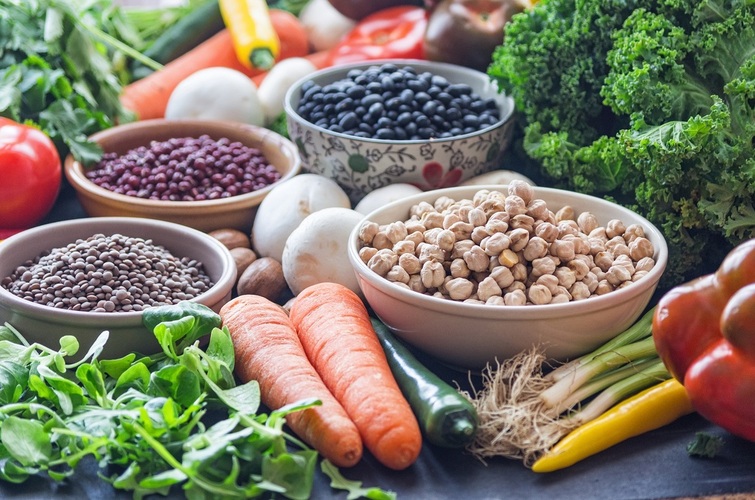
By Dr. Luigi Gratton, M.D., MPH
Dr. Luigi Gratton is the vice president of Nutrition Training at Herbalife Nutrition. He is responsible for ensuring Herbalife distributors have a thorough understanding of Herbalife Nutrition products, ingredients and benefit.

Imagine a world where everyone has access to affordable and nutritious food and where the planet is thriving and regenerating to sustain generations to come. That’s the dream. The reality is that for many people across the world, including Malaysia, access to nutritious food can be a challenge.
In fact, according to the World Resources Report, world food production will need to increase by more than 50 percent to feed close to 10 billion people in 2050. In Malaysia, the Ministry of Agriculture and Food Industries (MAFI) reports that Malaysia heavily relies on food imports to meet the increasing demand for basic foods such as rice, vegetables, fruits, beef, and milk, amongst others. To provide people with a nutritious diet, global food systems and eating habits need to change.
Sustainable nutrition: A path to restoring our Earth
To achieve sustainability within food systems, we need to meet the nutritional demands of everyone now, while also reducing the environmental impact for future generations. So, how can we develop a global food system that nourishes – not just feeds – everyone while being environmentally sustainable?
The intersection of nutrition and sustainability is essential to a better future, and as conscious consumers, we need to ensure that our diets are not only sustainable for our health but also for our planet. We need to cultivate food that is good for our health in ways that are restorative to our Earth.
Sustainable nutrition offers a forward-thinking framework whereby the food that we eat is diverse, nutrient-dense, and healthy while grown sustainably and without negative impacts on the ecosystem. It is guided by a set of characteristics, including:
- Eating a diet that is more plant-based, with a higher nutrient density.
- Choosing sustainably-sourced meats and fish when possible.
- Reducing the consumption of foods high in sugar and saturated fats.
- Reducing or eliminating food waste
- Adopting a regenerative approach to agriculture.
The current global diet is unsustainable given the gaps in wealth, opportunity, and distribution. In Malaysia, while close to 17,000 tonnes of food waste is recorded daily, a report found that one in five Malaysian children under the age of five are stunted, while half of Malaysian adults were found to be either overweight or obese.
We live in a world where calorie-rich foods are cheap and more accessible, but they lack the nutrients critical to growth, development, and overall health. High-quality proteins, especially plant-based proteins such as soy, quinoa, rice and, pea can help to replace food with little or no nutrition value to overcome the triple burden of malnutrition: undernutrition, micronutrient deficiency and obesity.
Plant-based proteins: A sound alternative
So, what does a sustainable diet look like?
Cutting back on eating meat and dairy products is said to be an effective method to decrease the environmental impact on the planet, according to a comprehensive analysis of the damage meat farming does to the planet.
Today, consuming plant-based protein is commonplace. More people now understand that plant-based diets are not devoid of protein – in fact, plant foods are nutrient-dense, which means that they provide an abundance of nutrients relative to their calorie cost. Also, plant-based proteins, as opposed to animal protein, are naturally cholesterol-free and are relatively low in saturated fats.
While soy is the king of plant-based proteins, as it contains all of the nine essential amino acids our body cannot produce on its own, other types of alternative proteins such as pea, quinoa and rice can also promote satiation and provide high protein content.
Key sustainability benefits of plant-based foods
Substituting animal-based proteins with plant-based proteins is the way forward as consumers grow more concerned about their environmental footprint. Some key environmental benefits of plant-based foods include:
- Lower greenhouse gas emissions
Some foods are more harmful to the environment than others. For example, 100 grams of beef protein can result in the release of the equivalent of 105 kilograms of CO2. In contrast, 100 grams of peas emits the equivalent of only about 0.2 kilograms of CO2.
According to U.S. Food and Agriculture Organization, raising livestock for meat, eggs, and milk generates 14.5 percent of global greenhouse gas emissions, greater than all transportation combined. The livestock sector in Malaysia is dominated by poultry, non-dairy cattle and goat, all of which contribute to the production of methane emissions.
- Less water usage
Livestock rearing activities also consume large amounts of water and the demand for clean water has already exceed availability in many regions with agriculture. With plants such as pea requiring much less clean water (50 litres/kilogram) than beef (13,000 litres/kilogram) during production, the environmental advantages of plant-based foods are clear.
- More efficient use of land
Plant-based crops are remarkably more efficient when it comes to the output produced in comparison to land use. Plant-based agriculture produces 14,000 more pounds of product compared to animal-based agriculture on a per acre basis, making the former a much more land-efficient way of producing food for the planet.
* The views expressed herein are strictly the personal opinion of the writer and do not necessarily represent the views of YamCha Time.







